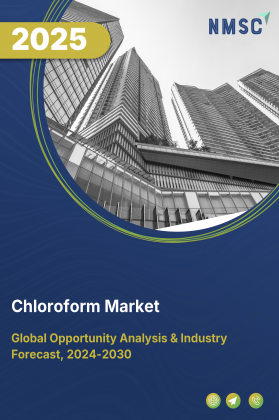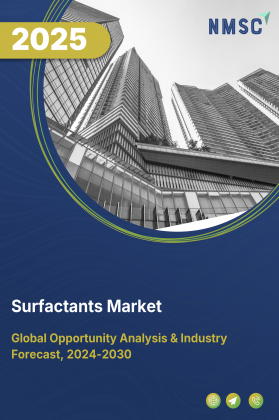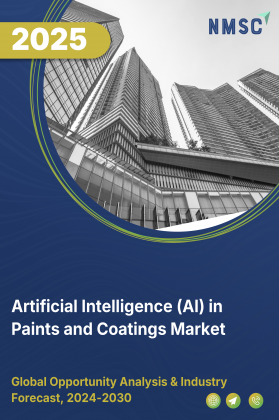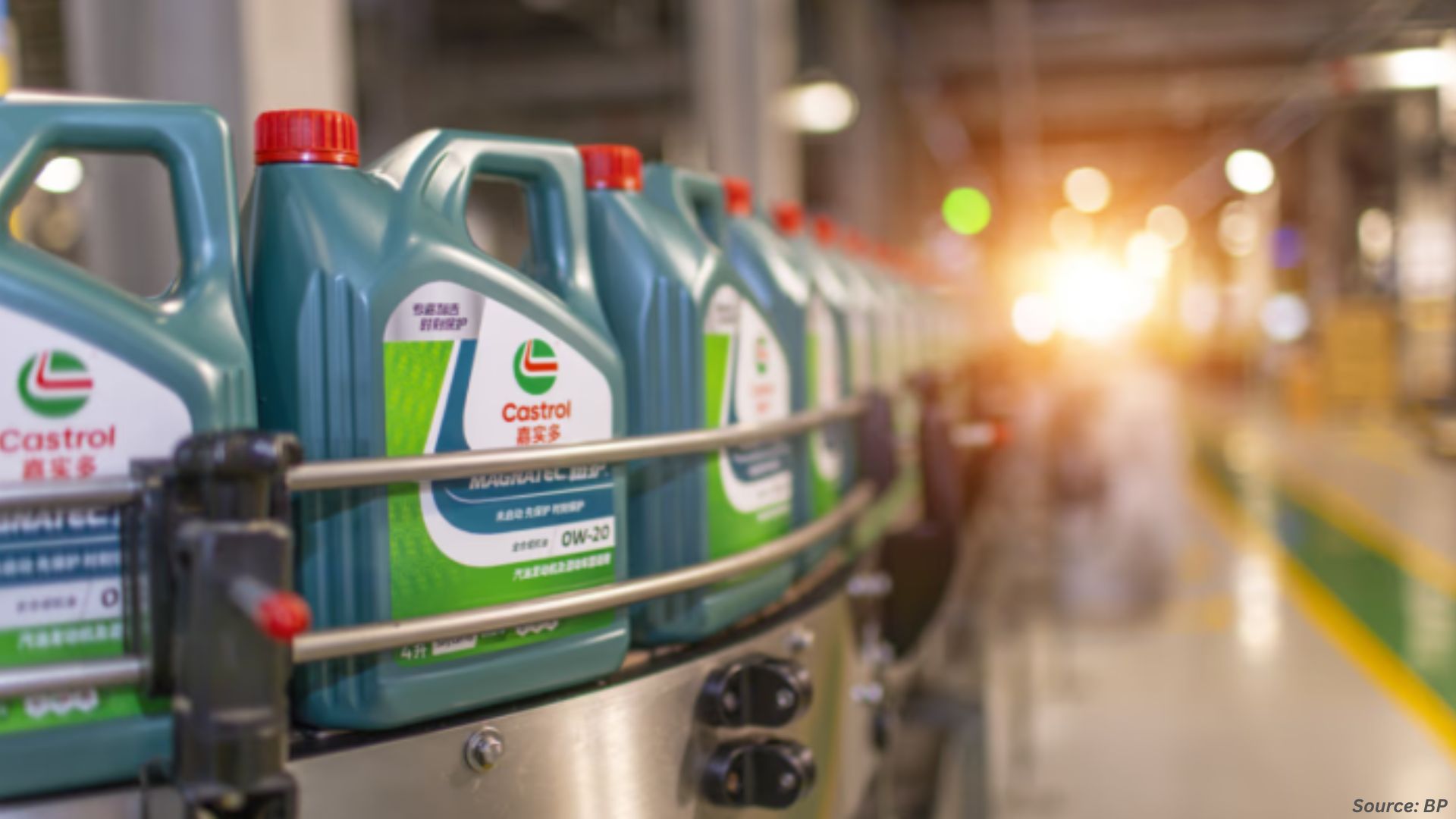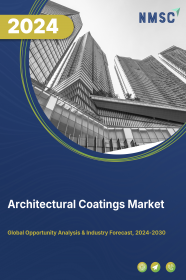
Architectural Coatings Market by Resin Type (Acrylic, Polyurethane, Alkyd, Epoxy, Polyester, Others), Technology (Waterborne, Solvent Borne), Function (Ceramics, Paints, Inks, Lacquers, Powder Coatings, Primers, Sealers), End User Industry (Residential, Non-Residential) - Global Opportunity Analysis and Industry Forecast, 2020 – 2030
Industry: Materials and Chemical | Publish Date: 31-Dec-2024 | No of Pages: 406 | No. of Tables: 233 | No. of Figures: 203 | Format: PDF | Report Code : MC298
Market Definition
The global Architectural Coatings Market held USD 66.86 billion in 2019 and is predicted to reach USD 109.34 billion by 2030 with a CAGR of 4.5% from 2020-2030. Architectural coatings are synthetic formulations applied on architectural structures to increase their longevity, provide it an aesthetic appearance, and safeguard it against extreme weather conditions such as humidity, temperature, and chemicals as well as drastically changing climatic conditions. These coatings are useful for interior & exterior walls, floors, and ceilings of residential and non-residential buildings as they are capable of absorbing and reflecting the light, as well as changing the color of the surface or substrate on which they are applied.
The architectural finishes, along with adding durability, lessen the risks of fire hazards. These coatings can be of various resin types such as acrylic, epoxy, polyester, polyurethane, alkyd, or any composite materials.
Market Dynamics and Trends
The proliferating building & construction sector, increasing renovation and recreation activities in residential as well as non-residential buildings, higher demands for fireproofing and waterproofing materials in old or new constructions, plus the inclination of consumers towards green-buildings and eco-friendly infrastructure concepts, are responsible for tremendous growth in the global architectural coatings market. The booming construction industry, especially in the Asia-Pacific region, and growing commercial construction activities in the U.S. has further supplemented the market size.
Besides, an increase in the per-capita disposable income at the global level, a hike in infrastructural spending as well as more and more erections of new skyscrapers, are expected to propel the growth of the global market throughout the forecast period.
However, factors such as stringent regulatory standards on the emission of Volatile Organic Carbon from several coating materials, higher risk of health hazards imposed by some chemicals, as well as concerns regarding environmental conservation, are responsible to impede the growth of the architectural coatings industry, during the forecast period.
Moreover, the recovering construction industry in the South American region, development of water-based eco-friendly architectural coatings, government support towards adoption of green coatings that are formulated by strictly abiding by the environmental norms, as well as mounting application areas of nanocoatings, and introduction of fluoropolymer coatings shall pave the way for new opportunities in the architectural coatings market, in future.
Market Segmentations and Scope of the Study
The architectural coatings market analysis is based on resin type, technology, function, application, and geography. Based on resin type, the market is segmented into acrylic, polyurethane, alkyd, epoxy, polyester, and others. Based on technology, the market covers waterborne and solvent-borne.
Based on function, the market is classified into ceramics, paints, inks, lacquers, powder coatings, primers, and sealers. Based on application, the market is divided into residential and non-residential. Geographic breakdown and analysis of each of the previously mentioned segments include regions comprising North America, Europe, Asia-Pacific, and RoW.
Geographical Analysis
Asia-Pacific is anticipated to hold the highest market share maintaining its lead throughout the forecast period, growing with the highest CAGR. This is attributable to the growing construction sector, major development firms in India, China, and Japan, increasing reclamation activities by governments, and the highest consumer of architectural finishes. This will further spur the architectural coatings market revenue by 2030.
Europe region would witness increasing market size in the global architectural coatings industry, owing to improvements in public & private infrastructures, demand for special furniture and coatings, innovation in coating products, as well as growing consumer demand for specialized & sustainable coating solutions.
North America represents a relatively mature market and it is expected to have an average growth rate over the forecast period owing to technological advancements, well-established infrastructures, and increasing demand for bio-based coating materials.
Competitive Landscape
Comprehensive competitive analysis and profiles of the top market players such as AKZO Nobel, Axalta Coatings, Asian Paints, BASF SE, Nippon Paints, Kansai Paint Co., PPG Industries, RPM International Inc., Sherwin-Williams Company, and Valspar Corporation are provided in the architectural coatings market report. The past endeavors, present developments and futuristic advancements, sum-up to comprehend the overall market growth.
For instance, in April 2020, the very well-known player in the global architectural coatings industry, PPG Industries, Inc., donated more than 290 gallons of anti-bacterial interior latex coatings to the Shanghai Tong Ren Hospital. The facility intends to use the coatings in the renovation of its medical laboratory, fever clinic, negative pressure isolation room, and center of disease control. Shanghai Tong Ren Hospital is a secondary medical institution that confirmed the first case of novel COVID-19 in Shanghai, and it holds a major contribution in the treatment of corona patients during the pandemic.
The Master’s Mark LUXURIANT and ECO TOUCH interior latex coatings by PPG claims at killing 99.99% of E coli and Staphylococcus, and killing 99.93% of the H1N1 virus under China’s National standards. The company’s donation of anti-bacterial coatings aims to offer direct support to medical institutions exposed to a high risk of infection, to maintain a clean and safe environment, help increase the hospital’s protection against bacteria and safeguard the health of healthcare workers and patients.
KEY BENEFITS
-
The architectural coatings market report provides a quantitative analysis of the current market estimations through 2020-2030 that assist in identifying the prevailing market opportunities to capitalize on.
-
The study comprises a deep dive analysis of the market, including current and future trends for depicting the prevalent investment pockets in the market.
-
The report provides information related to key drivers, restraints and opportunities and their impact on the architectural coatings industry.
-
The report incorporates a competitive analysis of the market players along with their market share and size.
-
The study elaborates on SWOT analysis and Porter’s Five Forces model.
-
Value chain analysis in the architectural coatings market study provides a clear picture of the stakeholders’ roles.
Key Architectural Coatings Market Segments
By Resin Type
-
Acrylic
-
Polyurethane
-
Alkyd
-
Epoxy
-
Polyester
-
Others
By Technology
-
Waterborne
-
Solvent Borne
By Function
-
Ceramics
-
Paints
-
Inks
-
Lacquers
-
Powder Coatings
-
Primers
-
Sealers
By End User Industry
-
Residential
-
Non-Residential
By Geography
-
North America
-
U.S.
-
Canada
-
Mexico
-
-
Europe
-
UK
-
Germany
-
France
-
Russia
-
Turkey
-
Rest of Europe
-
-
Asia-Pacific
-
China
-
India
-
Japan
-
Korea
-
Rest of Asia-Pacific
-
-
RoW
-
UAE
-
Argentina
-
Qatar
-
Brazil
-
REPORT SCOPE AND SEGMENTATION:
|
Parameters |
Details |
|
Analysis Period |
2019–2030 |
|
Base Year Considered |
2019 |
|
Forecast Period |
2020–2030 |
|
Market Size Estimation |
Billion (USD) |
|
Market Segmentation |
By Resin Type (Acrylic, Alkyd, Epoxy, Polyurethane, Polyester, Urethane, Other Resin Type) By Technology (Solvent Borne, Water Borne) By Function (Ceramics, Inks, Lacquers, Paints, Powder Coatings, Primers, Sealers, Stains, Varnishes) By End Use Industry (Residential, Non-Residential) |
|
Geographical Segmentation |
North America (U.S., Canada, Mexico) Europe (UK, Germany, France, Russia, Turkey, Rest of Europe), Asia-Pacific (China, Japan, Korea, India, Rest of APAC), Rest of the World (Brazil, Argentina, UAE, Qatar) |
|
Companies Profiled |
AKZO Nobel, Axalta Coatings, Asian Paints, BASF SE, Nippon Paints, Kansai Paint Co., PPG Industries, RPM International Inc., Sherwin-Williams Company, and Valspar Corporation. |
KEY PLAYERS
-
AKZO Nobel
-
Axalta Coatings
-
Asian Paints
-
BASF SE
-
Nippon Paints
-
Kansai Paint Co.
-
PPG Industries
-
RPM International Inc.
-
The Sherwin- Williams Company
-
The Valspar Corporation




















 Speak to Our Analyst
Speak to Our Analyst



